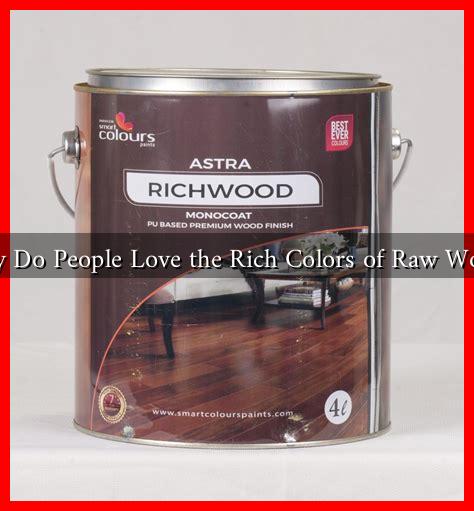-
Table of Contents
Why Do People Love the Rich Colors of Raw Wood?
Raw wood has captivated the hearts and minds of many, becoming a staple in interior design, furniture making, and even art. The rich colors and textures of raw wood evoke a sense of warmth, authenticity, and connection to nature. But what is it about these natural hues that draws people in? This article explores the reasons behind the love for raw wood, examining its aesthetic appeal, emotional resonance, and practical benefits.
The Aesthetic Appeal of Raw Wood
One of the primary reasons people are enamored with raw wood is its stunning visual appeal. The variety of colors, grains, and textures found in different types of wood creates a unique aesthetic that can enhance any space. Here are some key aspects of its aesthetic appeal:
- Natural Variation: Each piece of wood is unique, showcasing its own grain patterns and color variations. This individuality adds character to furniture and decor.
- Warmth and Comfort: The warm tones of wood, ranging from deep mahogany to light maple, create a cozy atmosphere that synthetic materials often lack.
- Versatility: Raw wood can complement various design styles, from rustic and farmhouse to modern and minimalist, making it a versatile choice for homeowners and designers alike.
Emotional Resonance with Nature
Humans have an innate connection to nature, often referred to as biophilia. This connection can explain why raw wood resonates emotionally with many people. The following points highlight this relationship:
- Sense of Authenticity: In a world dominated by mass-produced items, raw wood represents authenticity and craftsmanship, appealing to those who value handmade and artisanal products.
- Connection to the Outdoors: The natural colors and textures of wood evoke images of forests and nature, providing a calming effect that can reduce stress and promote well-being.
- Timelessness: Wood has been used in construction and design for centuries, giving it a timeless quality that resonates with those who appreciate history and tradition.
Practical Benefits of Raw Wood
Beyond its aesthetic and emotional appeal, raw wood offers several practical benefits that contribute to its popularity:
- Durability: When properly treated, raw wood can be incredibly durable, making it a long-lasting choice for furniture and flooring.
- Eco-Friendliness: Many types of wood are sustainable and biodegradable, appealing to environmentally conscious consumers. For instance, reclaimed wood is a popular choice for those looking to reduce their carbon footprint.
- Easy Maintenance: Raw wood can be easily maintained with simple cleaning and occasional oiling, making it a practical choice for busy households.
Case Studies: The Popularity of Raw Wood in Design
Several case studies illustrate the growing trend of raw wood in design. For example, the rise of the “Scandinavian design” movement emphasizes simplicity and natural materials, with raw wood being a central element. Brands like Muji and IKEA have successfully integrated raw wood into their product lines, appealing to consumers seeking minimalist yet warm designs.
Additionally, the popularity of open-concept living spaces has led to an increased demand for raw wood elements, such as exposed beams and wooden accent walls. According to a report by the National Association of Home Builders, homes featuring natural materials like wood are more likely to sell quickly and at higher prices.
Conclusion
The love for the rich colors of raw wood stems from its aesthetic appeal, emotional resonance, and practical benefits. As people increasingly seek authenticity and a connection to nature in their living spaces, raw wood continues to be a favored choice in design and decor. Its unique characteristics not only enhance the beauty of a space but also contribute to a sense of well-being and comfort. Whether through furniture, flooring, or decorative accents, raw wood remains a timeless and cherished material that resonates deeply with many.
For more insights on the benefits of using natural materials in design, you can visit Architectural Digest.


